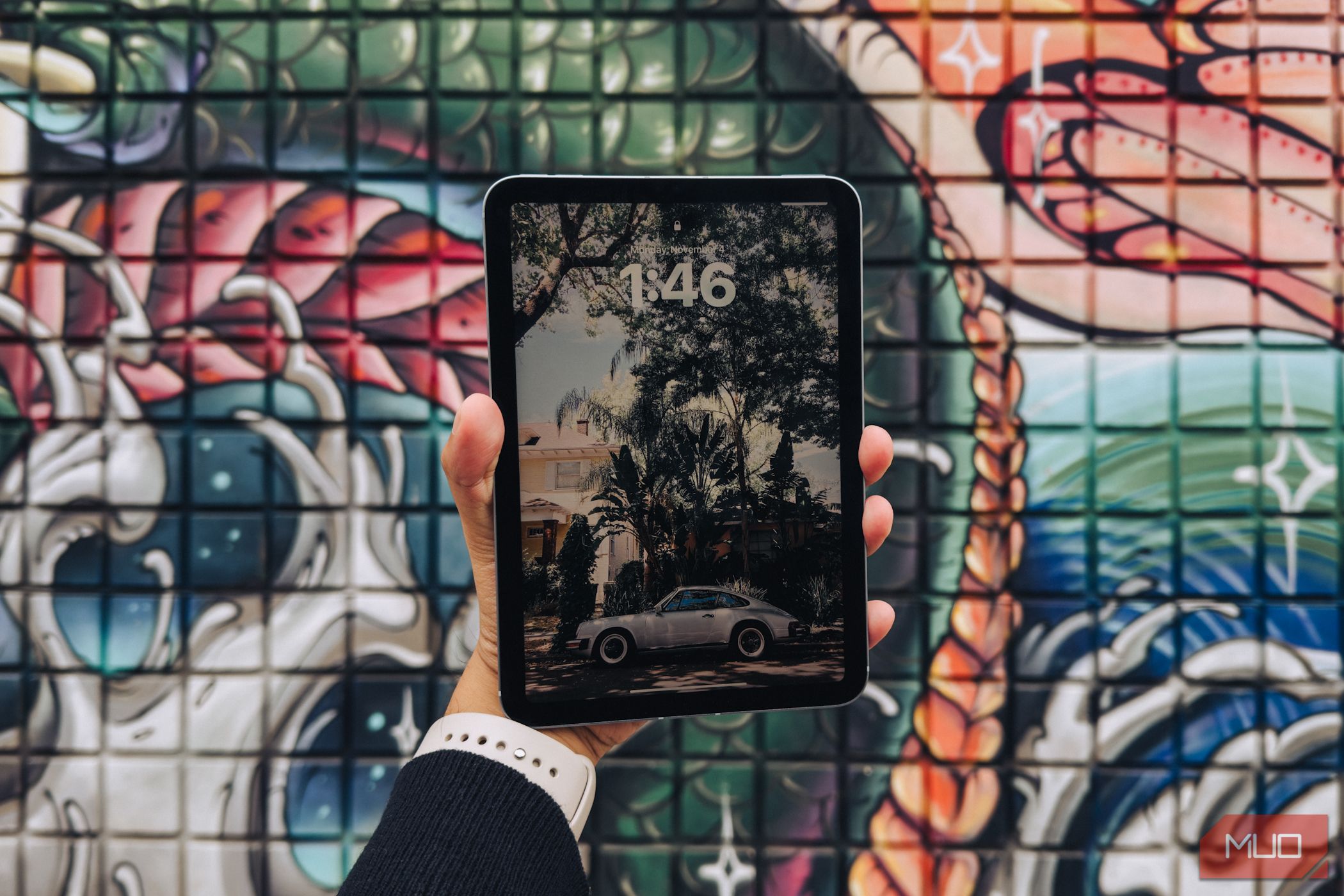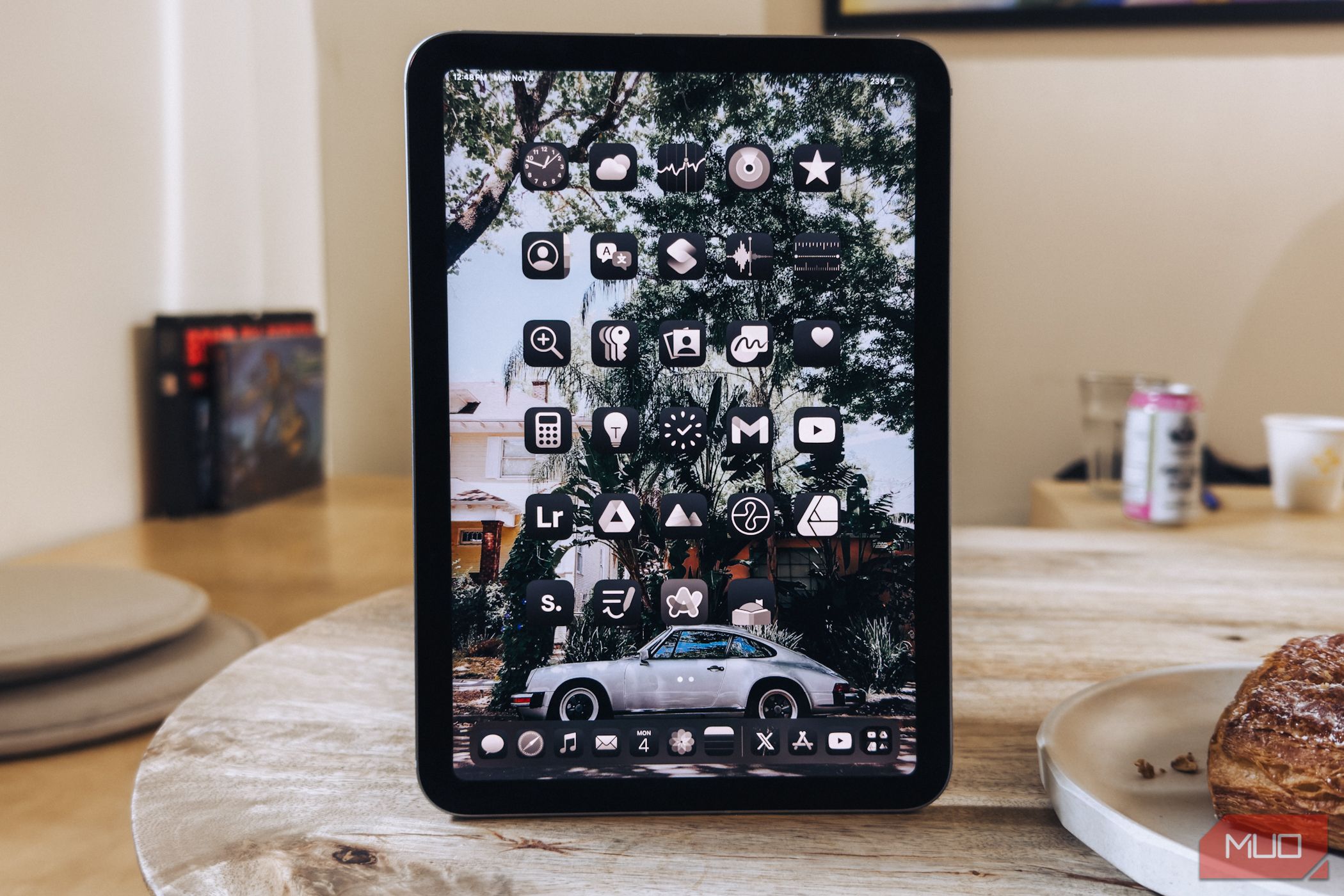Key Takeaways
- The iPad Mini remains a compact and portable device that sticks to the original iPad concept, offering a simple and effective experience.
- Key updates include the A17 Pro chip, Apple Pencil Pro support, 128GB base storage, and Wi-Fi 6E and Bluetooth 5.3 connectivity.
- While the updates are nice, the iPad Mini’s overall design and feature set haven’t changed significantly, meaning it still feels somewhat behind larger iPads in versatility.
If we look back at Apple’s 13-year history with the iPad, it’s clear that the company has largely strayed from the original bridging device Steve Jobs introduced between the iPhone and Mac. Today’s iPads feel more confusing than ever, with the top-of-the-line iPad Air and iPad Pro models effectively blurring the lines between iPadOS and macOS.
In my iPad Air review from earlier this year, I said that the “iPad exists on a plane where it’s both limitless and limited at the same time” because it tries to be a computer replacement when it sometimes shouldn’t. So, when I started using the iPad Mini, those expectations of what iPadOS should be able to do faded away, and honestly cemented this iPad Mini as one of the only models still in the lineup to uphold what the iPad was originally intended to be in the best ways.

Apple iPad Mini (A17 Pro)
$469 $499 Save $30
The iPad mini (A17 Pro) builds on its predecessor with a faster A17 Pro chip, 128GB base storage, and updated connectivity options like WiFi 6E and Bluetooth 5.3, but most of its core features remain unchanged from the 6th generation. Its 8.3-inch Liquid Retina LCD is still sharp and colorful but lacks advancements like OLED or a 120Hz refresh rate. Battery life holds steady at 8–9 hours, though the lack of faster charging is noticeable.
For those upgrading from older models, the mini’s portability, one-handed usability, and Apple Pencil Pro support make it the most compact and tablet-focused option in the lineup. However, existing 6th-gen owners may not find enough new here to justify the switch. At $499, it’s a capable but incremental upgrade.
- Great ultra-portable design
- Excellent flagship performance
- Higher base storage
- Slow charging
- Portrait-oriented front camera
Price and Availability
The iPad Mini (A17 Pro) continues to start at $499 in Space Gray, Starlight, Blue, and Purple. Its base storage configuration is 128GB, and it’s sold through most electronics retailers, including directly from Apple, Best Buy, and Amazon.
What’s New Here?
If you directly compare this iPad Mini to the previous 6th generation, you’re going to find five key differences: new colors, a new A17 Pro processor for Apple Intelligence support, Apple Pencil Pro support, a higher capacity 128GB base storage, and new connectivity supporting Wi-Fi 6E and Bluetooth 5.3. That’s it—aside from these five changes, everything else about this iPad Mini is identical to the previous 6th generation from 2021.
That said, if you’re coming from any iPad Mini before the 6th generation, or even just diving into the iPad landscape for the first time, I think you’ll be pleasantly surprised with the new one.
New Overkill Chipset
The new A17 Pro chip borrowed from the iPhone 15 Pro series provides a substantial performance boost over the A15 Bionic found in the previous generation, and in fact, benchmarks show this chip rivals Apple’s desktop-grade M1 chip, which feels like overkill for a device of this nature. What this translates to, however, is very snappy performance and more than enough headroom for demanding iPad apps—perfect for a device designed to be this portable.
I’ve been putting the A17 Pro to work with the Apple Pencil Pro. Whether taking notes during lectures in GoodNotes or editing photos in Lightroom and Affinity Photo, this iPad is practically hiccup-free.
The best aspect of using the iPad Mini that feels invaluable compared to its larger siblings is its form factor. Unlike my larger, 13-inch iPad Air, the mini’s compact size and one-handed usability make it my go-to for many scenarios where I wouldn’t necessarily think about bringing an iPad. Whether I’m commuting, taking quick notes in class, or editing photos on location, this iPad fits naturally into situations where larger models feel cumbersome. The combination of portability and power ensures that the iPad Mini earns its place in Apple’s lineup as the ultimate “take-it-anywhere” tablet.
I should preface this by saying if you’re considering the iPad Mini as a student, I would still recommend picking up the larger 11-inch iPad Air or 10.9-inch iPad because, while the ultra-portability of this iPad is very practical, using this 8.3-inch screen for long note-taking sessions is not. You’ll feel the fatigue of the smaller screen real estate as soon as you begin split-screening or any other type of intensive multi-tasking.
Of course, the main benefit Apple is touting with this chip upgrade is the ability for this iPad to run Apple Intelligence, and well, it’s technically here, but in a very limited capacity. Most of the more exciting features, like Image Playgrounds, meant to integrate with note-taking apps, aren’t available just yet, so we’re kind of stuck with Apple’s promise of what this iPad will be capable of months from now, which isn’t necessarily appealing for someone wanting to buy it right now.
Apple Pencil Pro Support
In regards to the new Apple Pencil Pro support on the iPad Mini, it’s essentially an identical experience to that of the iPad Air. The Find My feature, barrel roll gesture, and squeeze gesture add practical functionality, especially in apps like GoodNotes and Affinity Photo, where switching tools directly on the Pencil speeds up workflows. The squeeze gesture, which triggers haptic feedback when applied to the barrel, is particularly useful for quick tool changes without navigating menus.
These features work well on the iPad Mini’s smaller size, making the Pencil just as effective for note-taking, editing, and sketching as it is on larger iPads. Despite the compact screen, the Pencil Pro remains a reliable tool for both creative and everyday tasks.
Overall, this iPad mirrors the incremental nature of the M3 MacBook Air launch from earlier this year, and largely keeps the core areas of these devices the same. This iPad Mini upgrades the base storage from 64GB to 128GB, which is nice to see. You’re getting faster connectivity with Wi-Fi 6E, Bluetooth 5.3, and USB 3 with up to 10Gb/s transfer speeds. Still, for the vast majority of people looking at this iPad, these are just nice-to-have features and are a by-product of Apple using their last Pro-series iPhone chip here.
What Remains the Same Three Years Later
Knowing that this new iPad Mini is mostly a spec bump, I was curious to see what Apple kept unchanged from the 6th generation and how well these features hold up today. While it’s clear Apple focused its upgrades elsewhere, some of these retained elements feel increasingly dated.
Same Compact Display
The display is the same 8.3-inch Liquid Retina LCD panel as before, with a resolution of 2266 x 1488 at 326 ppi. It features True Tone and a wide P3 color gamut, which makes it suitable for everyday tasks like web browsing, YouTube, or casual gaming. At 500 nits of brightness, it performs well in most lighting conditions but struggles under direct sunlight.
What’s noticeably absent is any advancement to OLED, mini-LED, or even a higher refresh rate. I think a smoother display, especially one with 120Hz ProMotion, would be a welcome addition for general usability and gaming. That said, while the jelly scrolling issue, where parts of the screen refreshed unevenly, causing a tilt-like effect in the previous generation, I didn’t notice it during my time with this model.
Identical Camera Suite
In terms of the camera hardware, it’s identical to the 6th-generation iPad Mini. The 12MP rear camera is fine for scanning documents or quick snapshots, but it’s far from the quality of current iPhone models. Apple included a True Tone flash, which is great for low-light document scanning—a feature curiously absent on the pricier iPad Air.
On the front, the 12MP Ultra Wide camera continues to support Center Stage, which keeps you centered in the frame during video calls. However, the portrait orientation placement of the front-facing camera is starting to feel awkward now that every other iPad model, like the iPad Air and iPad Pro, has moved it to landscape. On this smaller form factor, the portrait orientation doesn’t cause significant issues when using the device in landscape for calls, but it’s a clear sign that Apple’s iterative updates to the mini are lagging behind the rest of the lineup.
Good Battery Life With Slow Charging
The battery remains a 19.3-watt-hour lithium-polymer cell, which I consistently got eight to nine hours of screen-on time with light to moderate usage. However, charging speeds feel slow, particularly compared to other Apple devices like the iPhone, which has seen charging times improve across recent generations. For an iPad that is made to go with you in more scenarios, the addition of faster charging would’ve made this iPad feel much more cohesive with its target audience.
Should You Buy the iPad Mini (A17 Pro)?
If you’re looking for the most quintessential iPad experience—something that truly embodies what the iPad was originally envisioned to be—the iPad Mini stands out as the best choice in Apple’s lineup. Unlike the iPad Air and iPad Pro, which blur the lines between tablet and laptop with their larger screens and “computer replacement” ambitions, the iPad Mini focuses on being a tablet first.
This year’s A17 Pro refresh doesn’t dramatically change what the iPad Mini offers. The upgraded processor ensures it will remain fast and capable for years to come, and features like Apple Pencil Pro support and faster connectivity add modern conveniences, but the lack of display advancements, outdated front-camera placement, and slow charging speeds make the mini feel stagnant in some key areas.
For current 6th-gen iPad Mini owners, this generation’s upgrades aren’t enough to justify replacing your device unless you heavily rely on Apple Pencil features or want more storage and future-proofed performance. But if you’re coming from an older iPad Mini or are new to the lineup, this model is an easy recommendation for anyone wanting an ultra-portable tablet that stays true to Apple’s original vision for the iPad.
At $499, the iPad Mini (A17 Pro) isn’t cheap, but it carves out its niche as the most “iPad” iPad you can buy—compact, focused, and unapologetically a tablet. If you value portability and don’t need the laptop-class sizes of larger models, the iPad Mini remains an excellent choice.


Apple iPad Mini (A17 Pro)
$469 $499 Save $30
The iPad mini (A17 Pro) builds on its predecessor with a faster A17 Pro chip, 128GB base storage, and updated connectivity options like WiFi 6E and Bluetooth 5.3, but most of its core features remain unchanged from the 6th generation. Its 8.3-inch Liquid Retina LCD is still sharp and colorful but lacks advancements like OLED or a 120Hz refresh rate. Battery life holds steady at 8–9 hours, though the lack of faster charging is noticeable.
For those upgrading from older models, the mini’s portability, one-handed usability, and Apple Pencil Pro support make it the most compact and tablet-focused option in the lineup. However, existing 6th-gen owners may not find enough new here to justify the switch. At $499, it’s a capable but incremental upgrade.








